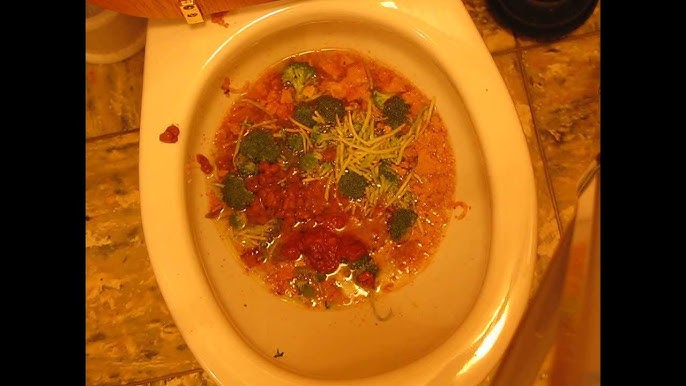Are You Able to Dispose of Food in the Toilet?
Are You Able to Dispose of Food in the Toilet?
Blog Article
Just about every person seems to have their own thinking when it comes to Think Twice Before Flushing Food Down Your Toilet.

Intro
Many people are typically confronted with the problem of what to do with food waste, specifically when it comes to leftovers or scraps. One common concern that emerges is whether it's okay to flush food down the commode. In this article, we'll explore the reasons that people could take into consideration purging food, the repercussions of doing so, and alternate approaches for appropriate disposal.
Reasons people could take into consideration flushing food
Lack of recognition
Some people may not know the potential damage caused by purging food down the commode. They may erroneously believe that it's a harmless technique.
Ease
Purging food down the toilet might feel like a fast and very easy service to dealing with unwanted scraps, particularly when there's no nearby trash bin available.
Negligence
Sometimes, individuals might merely pick to flush food out of sheer laziness, without considering the effects of their activities.
Consequences of flushing food down the bathroom
Environmental influence
Food waste that ends up in waterways can add to pollution and damage aquatic environments. In addition, the water made use of to purge food can stress water resources.
Plumbing concerns
Flushing food can cause clogged pipes and drains, creating pricey pipes repair work and inconveniences.
Kinds of food that must not be flushed
Coarse foods
Foods with coarse structures such as celery or corn husks can get entangled in pipes and cause clogs.
Starchy foods
Starchy foods like pasta and rice can take in water and swell, leading to clogs in pipelines.
Oils and fats
Greasy foods like bacon or food preparation oils should never be purged down the toilet as they can solidify and create obstructions.
Appropriate disposal approaches for food waste
Using a waste disposal unit
For homes furnished with garbage disposals, food scraps can be ground up and flushed with the pipes system. Nonetheless, not all foods appropriate for disposal in this way.
Recycling
Certain food packaging products can be recycled, decreasing waste and lessening ecological influence.
Composting
Composting is a green method to get rid of food waste. Organic materials can be composted and used to enrich soil for horticulture.
The importance of proper waste monitoring
Lowering ecological harm
Proper waste administration practices, such as composting and recycling, aid decrease pollution and maintain natural resources for future generations.
Securing plumbing systems
By staying clear of the method of flushing food down the commode, house owners can avoid pricey pipes fixings and keep the honesty of their plumbing systems.
Final thought
Finally, while it may be alluring to purge food down the commode for comfort, it's important to understand the prospective effects of this action. By taking on correct waste administration practices and dealing with food waste properly, individuals can contribute to healthier plumbing systems and a cleaner setting for all.
FLUSH FOOD DOWN THE TOILET?
FLUSHING FOOD CAN CAUSE BLOCKED DRAINS IN YOUR HOME
All of the plumbing fixtures in your home are connected to the same sewer pipe outside of your home. This outdoor sewer pipe is responsible for transporting all the wastewater from your home to the Council sewer mains. Even small pieces of food that go down the kitchen sink can cause problems for your sewer. It should therefore be obvious that flushing larger bits of food, such as meat, risks a clog in either the toilet itself or the sewer pipes. Flushing greasy food is even more problematic because oil coagulates when it cools, coating the interior lining of your pipes.
THE TOILET IS NOT A BIN
Food isn’t the only thing that people shouldn’t be flushing down the toilet. People use the toilet to dispose of all kinds of things such as tampons, makeup wipes, dental floss, kitty litter and even underwear. Water goes to great lengths to educate residents about the high costs and stress placed on wastewater treatment systems simply from people flushing the wrong stuff down the toilet. It costs taxpayers millions of dollars each year, and homeowners thousands in blocked drain repairs.
FLUSHING FOOD IS A WASTE OF WATER
Flushing food is a waste of our most precious resource - water. In June this year Level 1 water restrictions were introduced to protect water supply from drought conditions. Much of New South Wales continues to be affected by prolonged drought with recent figures revealing up to 97 per cent of the state remains in drought. Depending on whether you have a single or dual flush toilet, every single flush uses between five and 11 litres of water. In the current climate this is a huge amount of water to be wasting on flushing food that should be placed in the bin (or better yet, the compost).
https://www.jabplumbingsolutions.com.au/blog/can-you-flush-food-down-the-toilet

Do you really like reading up on Think Twice Before Flushing Food Down Your Toilet? Leave a review down the page. We would be pleased to listen to your opinions about this page. In hopes that you visit us again later on. If you liked our blog posting please don't forget to share it. I cherish reading our article about .
Click Here Report this page